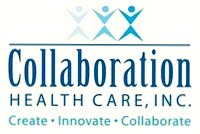Atul Gawande is a doctor who likes to write. He has presented some interesting ideas over the years. Health Care may be listening but it certainly hasn’t openly embraced his concepts; at least not yet. His 2009 article in the New Yorker about the high cost of health care in McAllen, Texas is sometimes credited with starting the whole health care reform discussion. His book, The “Checklist Manifesto”, presented the idea of using checklists (similar to the checklists used by pilots) to simplify the decision-making process in making medical decisions. His most recent article in the New Yorker, “Big Med”, discusses the processes used by the Cheesecake Factory and other “volume-based” food preparers and how they might be used to improve both the efficiency and quality in health care.
Health Care takes a long time to accept change. In the New Yorker article, Gawande references a study that examined how long it took several major health care discoveries to reach even half of Americans. On average, it took more than fifteen years.
In 2009, Americans spent over $200 billion in medical tests that were not needed. At the end of life an individual may see anywhere from 15 to 80 different medical specialists. Medical errors and quality challenges add billions more to a system that is already too expansive. While good medicine might not be able to be reduced to a recipe- Health Care could certainly use more effective processes to eliminate the waste and improve the quality of care delivered to the patient.
The Cheesecake Factory model is relatively simple; study what the best people are doing, figure out how to standardize it, and then bring it to everyone to execute.
We may not be able to create a Health Care Cheesecake Factory overnight, however, the system needs to start to be much more open to doing things different than it has in the past. There are some other ideas out there that can work- but it can’t take Health Care another fifteen years to make the changes that are needed. The individual, the patient, doesn’t have that much time.
Thursday, August 9, 2012
Subscribe to:
Posts (Atom)




